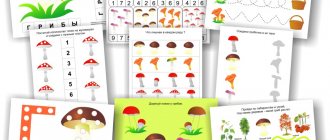Environmental problems with answers (part 1)
Environmental problems with answers
Read – think – draw conclusions and remember...
Task 1.
Atmospheric pollution includes the accumulation of dust (particulate matter) in the air. It is formed during the combustion of solid fuels, during the processing of minerals and in a number of other cases. The atmosphere over land is 15-20 times more polluted than over the ocean, over a small city 30-35 times more, and over a large metropolis 60-70 times more. Dust pollution has harmful health effects
person. Why?
Answer.
Air pollution with dust leads to the absorption of 10 to 50% of solar rays. Vapor vapors settle on small particles of dust, while dust is the nucleus of condensation, and this is necessary for the water cycle in nature. But we must not forget that in modern environmental conditions, dust contains a huge amount of chemical and highly toxic substances (for example, sulfur dioxide, carcinogens and dioxins), and therefore is, first of all, a source of toxic residues.
**********************************************************************
Task 2.
The number of malignant tumors in the indigenous population of some Arctic regions is significantly higher than average. Researchers associate this fact with a sharp increase in the intake of radioactive substances into the body of people in the North along the food chain: lichen - deer - human. How do you understand this?
Answer.
It should be noted that there is an increase in general radioactive contamination of the environment. Due to their slow growth and significant life expectancy, lichens are capable of accumulating radioactive substances from the environment. Deer feed on lichens (moss moss), and a concentration of harmful substances accumulates in their bodies. If a person eats mainly deer meat, then radioactive substances accumulate in his body. Thus, the accumulation of harmful substances occurs, which leads to serious diseases.
************************************************************************
Problem 3
. Poisoning of waterfowl with lead shot is becoming widespread in Europe and North America. Ducks swallow pellets like gastroliths - pebbles that help grind food in the stomach. Just six medium-sized pellets can cause fatal poisoning in a mallard duck. Smaller portions negatively affect reproduction. What consequences might such phenomena have for the duck population and for humans?
Answer.
Cases of fatal poisoning and disruption of breeding of ducks can affect the population size, i.e. there will be a reduction in numbers. For humans, using such ducks for food is fraught with lead poisoning, which enters the human body. And, as is known, lead has a highly toxic effect on the human body.
************************************************************************
Task 4.
Existing projects of sulfur recovery plants make it possible to turn large cities into sources of production of sulfur-containing compounds, for example, sulfuric acid. By recycling 90% of the sulfur dioxide currently emitted into the atmosphere, it is possible to obtain up to 170-180 tons of sulfuric acid per day during the heating season per city with a population of five hundred thousand. What natural principle is taken into account in such projects? What significance does the implementation of such projects have for human health?
Answer.
Nature does not know such a thing as waste: the waste products of some organisms are used by others. The same principle underlies waste-free technologies. Sulfur dioxide released into the atmosphere along with the air is inhaled by people, causing harmful effects on health. When combined with water or steam, sulfur dioxide forms sulfuric acid. But in one case we get acid rain, which is destructive to wildlife, and in the other we get containers with sulfuric acid, which is so necessary in various production processes.
**********************************************************************
Task 5.
Professor A.M. Maurin proposed a simple method for analyzing environmental changes in a city. In this case, cuttings of trees in the city and beyond are used. What is the essence of the method?
Answer.
If we assume equal weather conditions in the city and the control area, then the reason for the change in tree growth in different parts of the city may be mainly due to the influence of environmental pollution. The study should take into account the degree of soil trampling, its contamination with chlorides, and the possibility of damage to roots by underground communications.
*********************************************************************
Task 6.
When landscaping the territory of new buildings, you can often observe the following: stagnant puddles often form in such places, green spaces grow poorly, especially in the first years of their planting. What is the reason for these phenomena?
Answer.
Debris left on a construction site, although covered with a layer of soil, sharply reduces its permeability. For this reason and due to mechanical obstacles to the development of roots, green spaces grow poorly.
***********************************************************************
Task 7.
Urban wastewater always has high acidity. Polluted surface runoff can penetrate into groundwater. What consequences can this lead to if there are chalk deposits and limestones under the city?
Answer.
When acids interact with limestone, voids are formed in the latter, which can pose a serious threat to buildings and structures, and therefore to human life.
*********************************************************************
Task 8.
In areas of high moisture, about 20% of fertilizers and pesticides applied to the soil end up in watercourses. What is the significance of such effluents for human health? Suggest ways to protect the health of people in settlements that use water from these watercourses.
Answer.
The ingress of fertilizers and pesticides into water bodies is of negative importance, since, firstly, they are poisons for the human body, and secondly, mineral salts cause the development of vegetation (including blue-green algae) in water bodies, which further deteriorates the quality of water. Ways to solve the problem: water intake should be upstream of agricultural fields, the use of granular fertilizers, the development and implementation of rapidly decomposing pesticides, the use of biological methods of plant protection.
***********************************************************************
Task 9.
Hundreds of hectares of agricultural land have saline soils (soils with excess salts). Salts make the soil alkaline. When soil alkalinity is high, plants grow poorly and yields decrease sharply. It turned out that salts contained in the soil can be neutralized with various substances, for example:
a) a one percent solution of already used sulfuric acid, which is usually poured into a landfill, causing harm to nature;
b) defecator, which is a waste in sugar production;
c) iron sulfate - a by-product of metallurgical plants.
What principle of nature is taken into account by humans when combating soil salinization? What does this approach mean for nature?
Answer.
Natural systems operate on the basis of the principle of non-waste, i.e. waste from some organisms is used by others. To combat soil salinization, waste from various industries is used. This has the dual benefit of improving soils and reducing environmental pollution due to ion antagonism.
**********************************************************************
Problem 10.
On the map of Russia east of Kamchatka, two small points are marked in the Pacific Ocean - these are the Commander Islands. The islands were discovered in 1741 by the expedition of the Russian navigator Vitus Bering. Commanders are two islands (Beringa and Medny) with a unique fauna, a priceless treasury of a wide variety of animals and birds. About 30 years ago, minks were brought to Bering Island and a fur farm was created. But several clever animals managed to escape from the cage into the wild. The consequences for the nature of the island were sad. Why?
Answer.
Mink is an agile, bloodthirsty predator from which there is no escape either on land or in water. The animals multiplied quickly, having enough food. They mercilessly destroyed bird nests, hunted adult ducks, caught small salmon... a deep wound that did not heal for a long time was inflicted on the nature of the island.
*********************************************************************
Problem 11.
The use of pesticides to control weeds and insect pests in agriculture, on the one hand, increases yield, but on the other, leads to the death of innocent animals. In addition, hundreds of species of pests have adapted to pesticides and multiply as if nothing had happened (ticks, bedbugs, flies...). Why does the use of pesticides lead to the death of animals of different species? Why can insect pests become adapted to pesticides?
Answer.
Through the food chain, animals receive a large dose of chemicals and die. Among insect pests, there are individuals that are more resistant to pesticides than others. They survive and produce poison-resistant offspring. At the same time, the number of insect pests is restored very quickly, since poisons cause the death of natural enemies.
***********************************************************************
Problem 12
. Biologists have established such a paradoxical relationship: as soon as otters are exterminated in some body of water, there immediately becomes more fish, but soon there are much fewer of them. If otters appear in the pond again, then there will be more fish again. Why?
Answer.
The otter catches sick and weakened fish.
*********************************************************************
Problem 13.
It turns out that not all swamps are the same. There are raised bogs located on watersheds; they are fed only by precipitation. In raised bogs with a peat thickness of about 5 meters, for every 100 hectares of area there is approximately 4.5 million cubic meters of clean water. Lowland swamps, located mainly in floodplains, are fed by rich groundwater. Express your opinion regarding draining swamps.
Answer.
When deciding on the possibility of draining swamps, it is necessary to first study their features. Raised bogs are a reserve of clean water; in addition, they are poor in mineral salts, so their water is absolutely fresh. Therefore, draining such swamps has negative consequences. Draining low-lying swamps provides fertile soil for farming.
***********************************************************************
Problem 14.
In winter, fishermen make holes in the ice on rivers and lakes. Sometimes reed stalks are inserted into the hole. For what purpose is this being done?
Answer.
Thus, the water is enriched with air oxygen, which prevents fish from dying.
***********************************************************************
Problem 15.
With proper forest management, after cutting down the forest, the clearing is completely cleared of brushwood and wood residues. Felled trunks that are temporarily left in the forest for the summer must be cleared of bark. What do these rules mean for the forest?
Answer.
Compliance with the described rules prevents the occurrence of outbreaks of insect pests, which in the future can move to living trees.
*********************************************************************
Problem 16.
“
One person leaves a trace in the forest, a hundred - a path, a thousand - a desert.” Explain the meaning of the saying.
Answer.
The structure of forest soil deteriorates, air and moisture do not penetrate into it well, and tree seedlings die.
************************************************************************
Problem 17.
In some forestry enterprises, trees are cut down as follows: every 10 or 12 years, 8-10% of the total mass of all trunks is cut down. They try to carry out felling in deep snow in winter. Why is this method of cutting the most painless for the forest?
Answer.
The gradual thinning of the forest creates better conditions for the remaining trees. With deep snow cover, young growth and undergrowth are not damaged.
Literature. Savchenkov V.I., Kostyuchenkov V.N. Entertaining ecology. Smolensk-2000.





